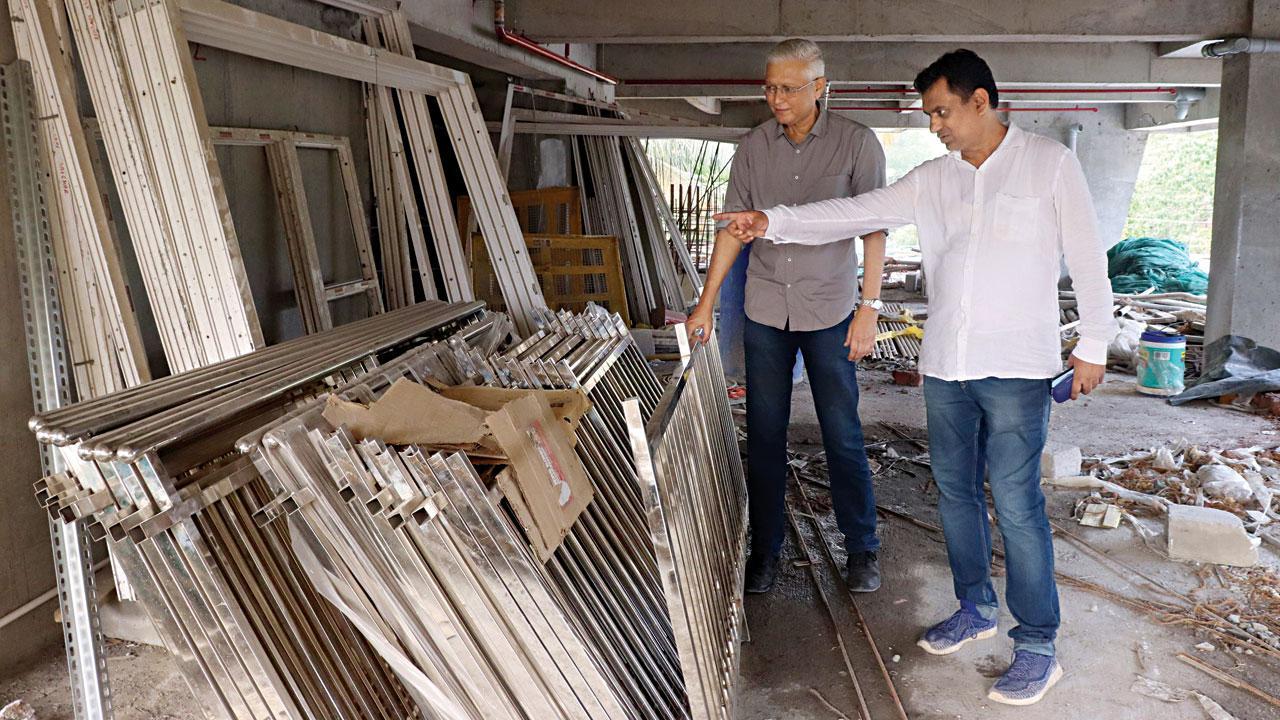Home / Mumbai / Mumbai News / Article /
Purvang soc residents, Mulund's self-redvpt pioneers, share secrets to success
Updated On: 21 April, 2024 03:27 AM IST | Mumbai | Sanjeevni Iyer
From 56 flats to 118, more than double the original floor space—residents of Mulund society that’s first in state to self-redevelop without a loan, share their learnings

The secretary, Milind Mahadik, and core committee member Rakesh Gaikwad point out the big windows used for ventilation
On March 9, residents of Mulund’s Purvarang Society raised the Gudi or brought in their respective new year, in the new homes they built themselves, without a bank loan. Their joy on this momentous occasion doubled just like the carpet area of their new apartments. From 390-sqft 1BHK apartments, they now live in 3BHKs spread over 1,017 sqft; and even benefited from the sale of the additional apartments as their seven-storey high building rose to 23 floors.
This is the stuff of dreams in the maximum city, and Purvarang is the first housing society in Maharashtra to achieve this fairy tale ending. Currently, 800 housing societies in the state have signed self-redevelopment agreements to garner benefits such as 10 per cent extra floor space and a reduction in GST promised by the government.




